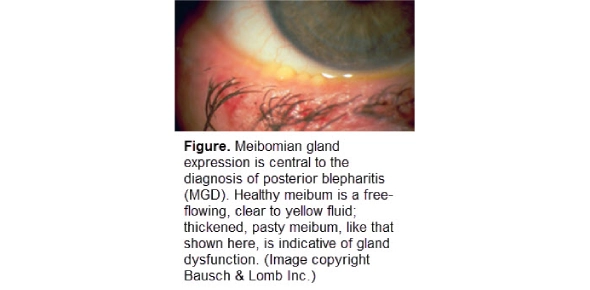
When examining a patient’s eyelid, many eyecare practitioners work anterior to posterior. The first step is to evert the lids, checking for concretions, other lesions, or signs of chronic inflammation – which may or may not be related to blepharitis. Close attention should also be paid to the quality of the lid margin.
1 Then, an inspection of the meibomian glands will determine whether the orifices are visible. The appearance of normal, healthy meibomian glands is marked by their location at regular intervals and by a clearly defined cuff of epithelial tissue around each orifice. It is important to check whether the glands appear small, irregular or atrophied, or, conversely, whether they are visibly plugged or capped. Most importantly, the glands must be expressed to grade meibomian gland function (Figure).
3References 1. Jackson WB. Blepharitis: current strategies for diagnosis and management. Can J Ophthalmol. 2008;43:170-9.4. Viso E, Rodriguez-Ares MT, Abelenda D, Oubina B, Gude F. Prevalence of asymptomatic and symptomatic meibomian gland dysfunction in the general population of Spain. Invest Ophthalmol Vis Sci. 2012;53:2601-6.
















